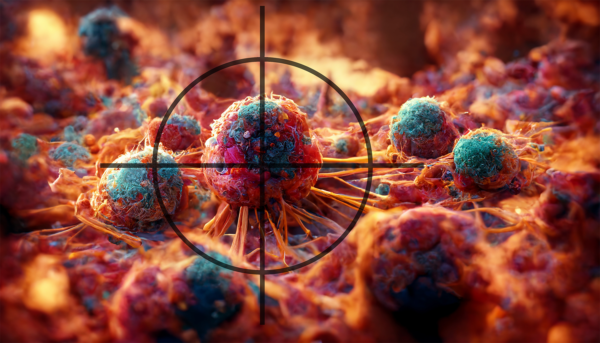
Cellular adoptive immunotherapies, such as CAR-T cells, are among the most effective tools in modern medicine’s toolbox for fighting cancer, yet tumor cells are nothing if not resilient. While these therapies have demonstrated very promising successes in recent years, cancer too has continued to show its unique ability to morph, hide and fight back in a stubbornly high percentage of cases. It is imperative for researchers to decipher the mechanisms cancers use to evade our latest weapons and what can be done to cut off their escape routes. CAR-T therapies can fail before they ever encounter tumor cells for a variety of reasons – because it was not possible to manufacture them quickly enough, in high enough number, with or without specific molecular machinery, etc. However, this post presents a summary of some of the things the tumor cells themselves do to prolong their own survival.
For cancer to develop in the first place, it has to survive the native immune system. Before any modified CAR-T cells are ever introduced, a patient’s own immune system has already put up what resistance it could but failed to tamp down the cancer’s growth on its own. Some of the mechanisms by which it accomplished this will impede the CAR-T cell attack when it does come. Within its immediate surroundings, the tumor microenvironment, a number of barriers actively suppress any counterattack by immune cells.
The last thing the tumor wants is to have its enemies multiplying around it. Cancer cells may strive to prevent this by suppressing T-cell proliferation through the inhibition of the RAS/MEK/ERK and PI3K/AKT pathways [1]. In so doing, they retard the progression of T cells through cell cycle stages and keep their numbers from growing.
Those T-cells that do arrive to fight the tumor may be met with a further obstacle: a molecular command to self-destruct. Physical contact with the tumor cells may activate the PD-1/PD-L1 pathway, signaling apoptosis and depleting T-cell numbers [1]. Additionally, PD-L1 may trigger some immune cells to switch sides by inducing CD4+ T cells to transform into T regulatory cells that will suppress the activity of other immune cells [1].
If sabotage fails, disguise may succeed. Patients who receive CAR-T therapies may relapse after initial improvement of their condition because tumor cells have downregulated the expression of the surface antigen molecules T cells were using to spot them [2]. This “antigen escape” renders them undetectable to those immune cells. Additionally, tumor cells may “lineage-switch,” changing their phenotype, or outward molecular features from those of one cell type to another [3].
Research aiming to uncover the underlying mechanisms behind these and other adaptations used by tumor cells is ongoing and will enable us to cut-off more and more of cancer’s escape routes.
References
- Nie, Y., Lu, W., Chen, D. et al. Mechanisms underlying CD19-positive ALL relapse after anti-CD19 CAR T cell therapy and associated strategies. Biomark Res 8, 18 (2020). https://doi.org/10.1186/s40364-020-00197-1
- Shah, N.N., Fry, T.J. Mechanisms of resistance to CAR T cell therapy. Nat Rev Clin Oncol. 2019 Jun;16(6):372-385. doi: 10.1038/s41571-019-0184-6. PMID: 30837712; PMCID: PMC8214555.
- Li, L-Z., Sun, Q., Fang, Y., et al. A report on Lineage switch at relapse of CD19 CAR-T therapy for Philadelphia chromosome-positive B-precursor acute lymphoblastic leukemia. Chin Med J. 2021 Aug,15. p2001-2003. doi.org/10.1097/CM9.0000000000000962
